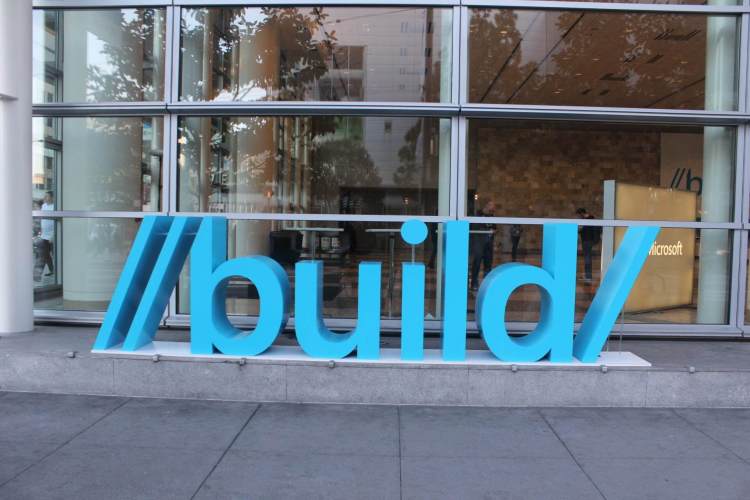So Microsoft’s annual Build developer conference came and went, and the computing giant unveiled a number of initiatives aimed at the software engineers and web developers of the world.
From Windows 10 to Cortana and bots, here’s a quick recap of everything announced at Build 2017.
Embracing the competition
A core theme to emerge from Build 2017 was Microsoft’s tacit acknowledgement that it needs to embrace competing platforms if it’s to thrive as a software and services company.
Though iTunes has been available on Windows for more than a decade, Microsoft revealed that Apple’s media-focused software would be landing in the Windows Store later this year, a key launch given the impending arrival of Windows 10 S, which can only use apps available in the Windows Store.
June 5th: The AI Audit in NYC
Join us next week in NYC to engage with top executive leaders, delving into strategies for auditing AI models to ensure fairness, optimal performance, and ethical compliance across diverse organizations. Secure your attendance for this exclusive invite-only event.
Elsewhere, Microsoft also announced that its cloud storage service, OneDrive, would soon work with Apple’s iMessage, letting users share documents and photos with friends without leaving their iMessage chat. As part of the same announcement, Microsoft revealed that it was opening offline access to folders within OneDrive on Android, with support for iOS users coming later this year.
Microsoft also unveiled Xamarin Live Player in preview, which is effectively a “live coding environment” for developers to debug Android and iOS apps without SDKs or emulators.
Additionally, Microsoft’s integrated development environment (IDE), Visual Studio, was also launched out of preview for Mac. And as another swift reminder that Microsoft has been increasingly prioritizing the “Big 2” mobile operating systems over its own, the company finally revealed that Visual Studio Mobile Center was finally getting Windows support — seven months after debuting with support only for Android and iOS.
In a show of support for developers and fans of Linux, Microsoft also revealed that Ubuntu, Suse Linux, and Fedora are all coming to the Windows Store, making it easier to run Linux apps on Windows 10 devices.
Bots, Cortana, & AI
A little more than a year after launching its Bot Framework, Microsoft revealed that it’s now used by over 130,000 developers. With that in mind, the company used Build 2017 to announce that Bing search results now include Skype bots, in addition to myriad chat apps, including Slack, Facebook Messenger, and Telegram. Bots will also soon be able to join video conversations in Skype, with developers able to use the BotBuilder RealTimeMediaCalling extension on GitHub, which just entered preview.
Microsoft also revealed that Cognitive Services, a conduit for third parties to access its AI algorithms for “vision, speech, language, and knowledge,” was arriving on bot-to-bot communication platform Interbot, a product from Gupshup. Related to this, Microsoft announced it was releasing four new customizable artificial intelligence services via Cognitive Services, allowing developers to build even more AI into their own products.
A number of announcements were also made relating to Cortana, Microsoft’s voice-enabled digital assistant. The company announced a public preview of its Cortana Skills Kit that enables developers to create voice apps for Cortana, and more than 20 such apps made their debut at Build. The software giant also revealed that it was working with both Intel and HP to bring more Cortana-powered devices to market.
Microsoft’s bread and butter
Microsoft announced some interesting tidbits about its core bread and butter services, in addition to making a few surprise announcements.
The company gave a glimpse into how it wants to tie its various apps, products, and platforms together with the Microsoft Fluent Design System, which is effectively guidelines that enable Microsoft to evolve its Metro/Modern UI design language, replete with rules for developers creating software to run on Windows 10.
https://www.youtube.com/watch?v=vcBGj4R7Fo0
Microsoft also demonstrated Windows 10 running on devices with ARM processors, with full support for existing Win32 apps. And it revealed that Windows 10 is now installed on more than 500 million devices, a feat that took around 21 months to achieve.
Looking to the future, Microsoft announced a new Windows 10 Fall Creators Update, which is coming later this year, with the company teasing a new creative app called Windows Story Remix that uses the Microsoft Graph to transform and combine your photos and videos.
https://www.youtube.com/watch?v=kh0be6z-Zl8
As part of the Windows 10 Fall Creators Update, Microsoft also outlined plans to launch OneDrive files on-demand, a feature that lets users access their files online without having to download them and consume valuable storage space on their devices.
Elsewhere, Microsoft had a little news to share around its cloud computer service, Azure. With Azure Cosmos DB, Microsoft is offering a globally distributed database with five consistency choices, rather than forcing developers to choose between strong and eventual consistency.
Other notable announcements to emerge from Build: Developers can now publish Microsoft Teams apps to the Office Store, and Microsoft unveiled its first Windows Mixed Reality motion controllers, alongside a mixed reality developer kit.
https://www.youtube.com/watch?v=k9Rm-U9havE
Finally, one of the more interesting early-stage products to emerge at Build was the Emma Watch, a wearable that counters Parkinson’s tremors by using vibrations.


